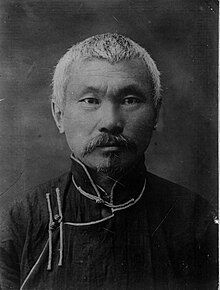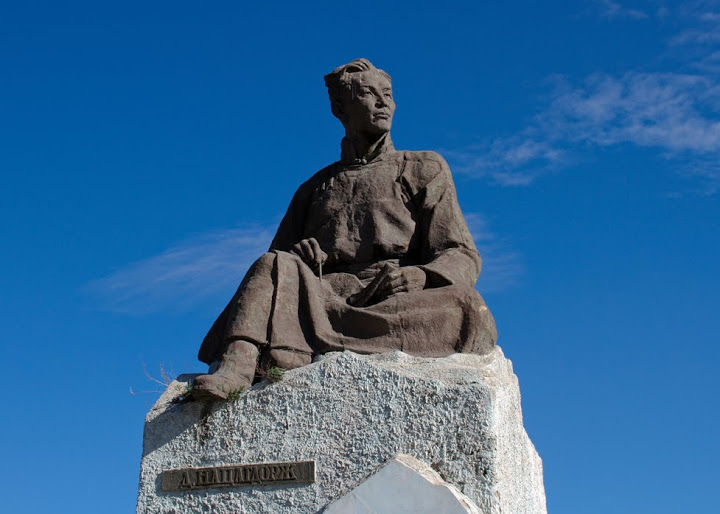The earliest art
found in Mongolia was cave and rock drawings. It mainly depicted their nomadic lives of
the time. Once Buddhism was introduced to the people here, most of the art from
that point forward was tied to their religious stories and characters. This
pretty much lasted up until the 20th century.
Buddhist art
generally fell into a number of mediums. One common art form was the thangka
(sometimes spelled a number of other ways). It’s essentially a painting on a
piece of cloth, typically of either a deity or some other religious symbol or
scene. It wasn’t framed, but rather rolled up like a scroll. Sometimes it’s
imprinted like an appliqué. Sculptures were also created in a variety of
different sizes and materials. Bronze was typically the most common material
used for sculpting Buddhist deities. A spiritual leader by the name of
Zanabazar (which I keep reading as Zanzibar) was quite influential in the art
of the 17th century.
During the 19th
century, art started to change. An artist by the name of Marzan Sharav began to
implement more realistic styles of painting. As the country changed its
socio-political views and their government adopted communism, socialist realism
became the thing. However, many of the thangka-like religious paintings
suddenly began being produced as secular paintings. Artists who tried to push
modernism were subject to harsh censorship and criticism and were dealt with
accordingly. Today, artists enjoy more artistic freedom and delve into a
variety of different styles.
The vast majority
of literature in Mongolia is written in the Mongolian language. There really
isn’t that much literature preserved from the times when the Mongol Empire
reigned. However, one notable exception is that of The Secret History of the Mongols. (I suppose it’s not so secret
now, is it?) It’s the oldest piece of Mongolian literature there is, that we
know of. Even though there are portions of this that contain much older poetry.
This work is so significant that it’s not only considered a classic in
Mongolian literature but in world literature as well.
A few other
portions of poems and literary works have been found from these early
centuries, but not very many. Most of it fell into the category of epic poetry,
genealogy, and stories of epic heroes. As Buddhism began to spread its way
across Mongolia, religious texts also appeared in Mongolian as well. Many of
these were also translations of texts from India, China, and Tibet.
As Mongolia aligned
with Russia and became a communist nation, important Russian works were
translated into Mongolian. Tseveen Jamsrano was a leading Buryat (an ethnic
group living in the northern part of Mongolia and Siberia) scholar and
politician who was also a writer, journalist, editor, and translator.
Religious theatre
has had a presence for several centuries. One popular story line is the
character Milarepa, a Tibetan hermit. These plays were especially popular
during the 18th and 19th centuries. The oldest one, “Moon
Cuckoo” by Danzanravjaa, was written in 1831 (even though it got lost during
the early part of the 20th century). Theatre companies started
popping up during the 20th century and lasted even during the
communist years to today.
Some authors of
note to look for include Begziin Yavuukhulan (famous poet), Dashdorjiin
Natsagdorj (often considered founder of modern Mongolian literature), Vanchinbalyn
Injinash, Byambyn Rinchen, Ayurzana Gun-Aajav, Lodongiin Tudev, Chadraabalyn Lodoidamba,
Galsan Tschinag, and Mend-Ooyo Gombojav.
Up next: music and
dance
.jpg)





No comments:
Post a Comment